Top 10 Foods Highest in Phosphorus
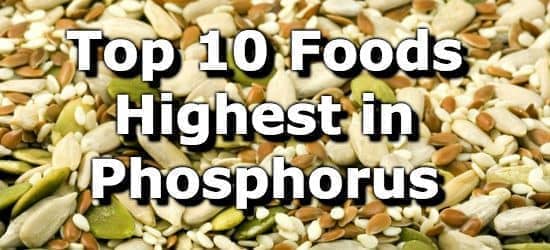
Phosphorus is an essential nutrient required for proper cell functioning, regulation of calcium, strong bones and teeth, and for making ATP (adenosine triphosphate) a molecule that provides energy to our cells.
A deficiency of phosphorus can lead to lowered appetite, anemia, muscle pain, improper bone formation (rickets), numbness, and a weakened immune system. Phosphorus is found in almost every food, and as such, deficiency is rare.
Conversely consuming too much phosphorus causes the body to send calcium from the bones to the blood in an attempt to restore balance. This transfer of calcium weakens bones and can cause calcification of internal organs, increasing the risk of heart attack and other vascular diseases.
Some scientific research suggests that phosphorus is more easily absorbed from meat products and that you can only absorb half of the phosphorus contained in plant foods. The amount of phosphorus absorbed differs from person to person and the plant sources of phosphorus are still listed here and recommended.
Foods high in phosphorus include fish, pork, tofu, milk, chicken, scallops, lentils, squash seeds, beef, and whole grains. The daily value (DV) for phosphorus is 1250mg. (2)
Below is a list of high phosphorus foods by common serving size, use the complete nutrient ranking of phosphorus foods to sort by 100 gram or 200 calorie serving sizes.
People with chronic kidney disease looking to reduce phosphorus intake can also see the article on foods low in phosphorus.
-
 1. Tuna (Yellowfin)
1. Tuna (Yellowfin)
Phosphorus
in a 6oz FilletPhosphorus
per 100gPhosphorus
per 200 Calories566mg
(45% DV)333mg
(27% DV)512mg
(41% DV)More Fish High in Phosphorus
- 45% DV in a 6oz salmon fillet
- 38% DV in a 6oz mackerel fillet
- 33% DV in a 5.3oz haddock fillet
See all fish high in phosphorus.
-
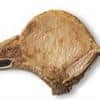 2. Lean Pork Chops
2. Lean Pork Chops
Phosphorus
in a 6oz ChopPhosphorus
per 100gPhosphorus
per 200 Calories515mg
(41% DV)303mg
(24% DV)311mg
(25% DV)More Pork High in Phosphorus
- 31% DV in 1 cup of lean cured ham
- 24% DV in 1 rack of pork ribs
- 20% DV in 3oz of pork tenderloin
See all meats high in phosphorus.
-
 3. Firm Tofu
3. Firm Tofu
Phosphorus
per CupPhosphorus
per 100gPhosphorus
per 200 Calories479mg
(38% DV)190mg
(15% DV)264mg
(21% DV)More Soy Products High in Phosphorus
- 35% DV in 1 cup of tempeh
- 34% DV in 1 cup of boiled green soybeans
- 12% DV in a 16oz glass of soymilk
-
 4. Low-Fat Milk
4. Low-Fat Milk
Phosphorus
per 16oz GlassPhosphorus
per 100gPhosphorus
per 200 Calories449mg
(36% DV)92mg
(7% DV)368mg
(29% DV)More Dairy High in Phosphorus
- 33% DV in a 16oz glass of whole milk
- 28% DV per cup of low-fat yogurt
- 16% DV per oz of parmesan
See all dairy foods high in phosphorus.
-
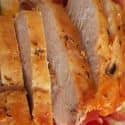 5. Lean Chicken Breast
5. Lean Chicken Breast
Phosphorus
in a 6oz BreastPhosphorus
per 100gPhosphorus
per 200 Calories410mg
(33% DV)241mg
(19% DV)307mg
(25% DV)More Poultry High in Phosphorus
- 39% DV in 6oz of lean ground turkey
- 31% DV in 6oz of turkey breast
- 24% DV in 1 chicken thigh
See all meats high in phosphorus.
-
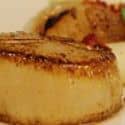 6. Scallops
6. Scallops
Phosphorus
per 3ozPhosphorus
per 100gPhosphorus
per 200 Calories362mg
(29% DV)426mg
(34% DV)768mg
(61% DV)More Shellfish High in Phosphorus
- 51% DV in 20 small clams
- 21% DV in 3oz of shrimp
- 17% DV in 3oz of oysters
-
 7. Lentils
7. Lentils
Phosphorus
per CupPhosphorus
per 100gPhosphorus
per 200 Calories356mg
(29% DV)180mg
(14% DV)310mg
(25% DV)Beans High in Phosphorus
- 24% DV in 1 cup of small white beans
- 23% DV in 1 cup of great northern beans
- 22% DV in 1 cup of chickpeas
See all beans high in phosphorus.
-
8. Squash and Pumpkin Seeds
Phosphorus
per 1oz HandfulPhosphorus
per 100gPhosphorus
per 200 Calories350mg
(28% DV)1233mg
(99% DV)441mg
(35% DV)More Nuts and Seeds High in Phosphorus
- 37% DV in 1oz of hemp seeds
- 20% DV in 1oz of chia seeds
- 16% DV in 1oz of Brazil nuts
See all nuts and seeds high in phosphorus.
-
 9. Beef (Skirt Steak)
9. Beef (Skirt Steak)
Phosphorus
per 6oz SteakPhosphorus
per 100gPhosphorus
per 200 Calories335mg
(27% DV)197mg
(16% DV)147mg
(12% DV)More Red Meat High in Phosphorus
- 17% DV in 3oz of beef roast
- 17% DV in 3oz of buffalo steak
- 16% DV in 3oz of beef stew
See all meats high in phosphorus.
-
 10. Quinoa
10. Quinoa
Phosphorus
per CupPhosphorus
per 100gPhosphorus
per 200 Calories281mg
(22% DV)152mg
(12% DV)253mg
(20% DV)More Whole Grains High in Phosphorus
- 14% DV in 1 cup of oatmeal
- 12% DV in 1 cup of brown rice
- 12% DV in 1 cup of whole wheat pasta
Note: *While bran and germ (the components of whole grains) are high in phosphorus, they are in a storage form called phytin, which is not absorbed. (5). See all grains high in phosphorus, and breakfast cereals high in phosphorus.
Printable One Page Sheet

People at Risk of a Phosphorus Deficiency
- Alcoholics - Alcohol can draw phosphorus supplies from bones, lowering overall levels in the body.(3)
- People Taking Salt Substitutes - Salt substitutes which contain potassium may reduce phosphorus levels in the long term.(3)
- Long distance athletes - People who exercise over long distances lose electrolytes via sweat and need to replenish their sodium, potassium, magnesium, and phosphorus levels.
- Dehydration - People who consume excess alcohol, suffer with diarrhea, or become dehydrated for any other reason need to replenish their sodium, potassium, magnesium, and phosphorus levels.
- Drugs which may Lower Phosphorus Levels(3)
- Antacids - Antacids with aluminum, calcium, or magnesium, can hamper phosphorus absorption in the digestive system.
- Anticonvulsants - Anticonvulsants, such as phenobarbital and carbamazepine or Tegretol, can lower levels of phosphorus in the body, and create enzymes which hamper absorption.
- Bile Acid Sequestrants - Bile acid sequestrants used to lower cholesterol can prevent phosphorus being absorbed by the body.
- Corticosteroids - Corticosteroids, such as prednisone or methylprednisolone (Medrol), can increase excretion of phosphorus in unrine.
- Insulin - Insulin in high doses may lower phosphorus absorption.
- ACE Inhibitors (Blood Pressure Medication) - ACE Inhibitors such as Benazepril (Lotensin), Captopril (Capoten), Enalapril (Vasotec), Fosinopril (Monopril), Lisinopril (Zestril, Prinivil), Quinapril (Accupril), and Ramipril (Altace) may lower levels of phosphorus.
- Cyclosporine (Immune Suppressant)
- Cardiac Glycosides (Digoxin or Lanoxin)
- Heparins (Blood-thinning Drugs)
- Non-Steroidal Anti-Inflammatory Drugs (Ibuprofen or Advil)
Warnings
About the Data
Data for the curated food lists comes from the USDA Food Data Central Repository.
You can check our data against the USDA by clicking the (Source) link at the bottom of each food listing.
Note: When checking data please be sure the serving sizes are the same. In the rare case you find any difference, please contact us and we will fix it right away.
About Nutrient Targets
Setting targets can provide a guide to healthy eating.
Some of the most popular targets include:- Daily Value (%DV) - The daily value (%DV) is a general guideline for consumption that will prevent deficiency of a particular nutrient in most people. The %DV refers to the percentage of an amount that\'s found in a single serving of a food. It also accounts for absorption factors. It is set by the U.S. FDA.
- Recommended Dietary Allowance (%RDA) - The RDA sets an average daily dietary intake level that is sufficient to meet the nutrient requirements of nearly all (97.5%) healthy individuals. It\'s more specific than the daily value, and varies by age and gender. The RDA is set by the US National Institutes of Health.
- Reference Dietary Intake (%RDI) -The reference dietary intake is similar to the recommended daily allowance, but is specific to age and gender. The RDI for amino acids is set by the U.N. World Health Organization.
- Adequate Intake (%AI) - This value is primarily used in reference to omega-3 and omega-6 fats. The Adequate Intake is set by the U.S. Institute of Medicine. Because there is less evidence to determine the ideal targets for consumption of these nutrients, the specific amount is considered to be less reliable. Using the term Adequate Intake, rather than one of the other terms, helps to emphasize that the ideal intake of that particular nutrient has not yet been scientifically determined.
See the Guide to Recommended Daily Intakes for more information.
Want to set your own targets? Sign up for an account and set custom targets in the daily food log.From the Nutrient Ranking Tool
Use the ranking tool links below to select foods and create your own food list to share or print.
- Foods High in Phosphorus
- Foods Low in Phosphorus
- Vegetables High in Phosphorus
- Fruits High in Phosphorus
- Vegetarian Foods High in Phosphorus
- Nuts High in Phosphorus
- Grains High in Phosphorus
- Beans High in Phosphorus
- Dairy High in Phosphorus
- Breakfast Cereals High in Phosphorus
- Fast Foods High in Phosphorus
View more nutrients with the nutrient ranking tool, or see ratios with the nutrient ratio tool.
Related
Data Sources and References
- U.S. Agricultural Research Service Food Data Central
- USDA Food Label Guidelines
- Linus Pauling Institute on Phosphorus
- Medline Plus article on Phosphorus in Diet
Try the recipe nutrition calculator, or daily meal planner.
Create a free account to log and track foods.

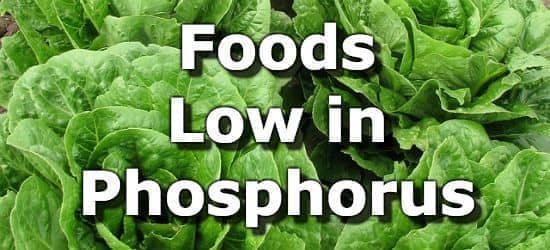 Next ➞
Next ➞